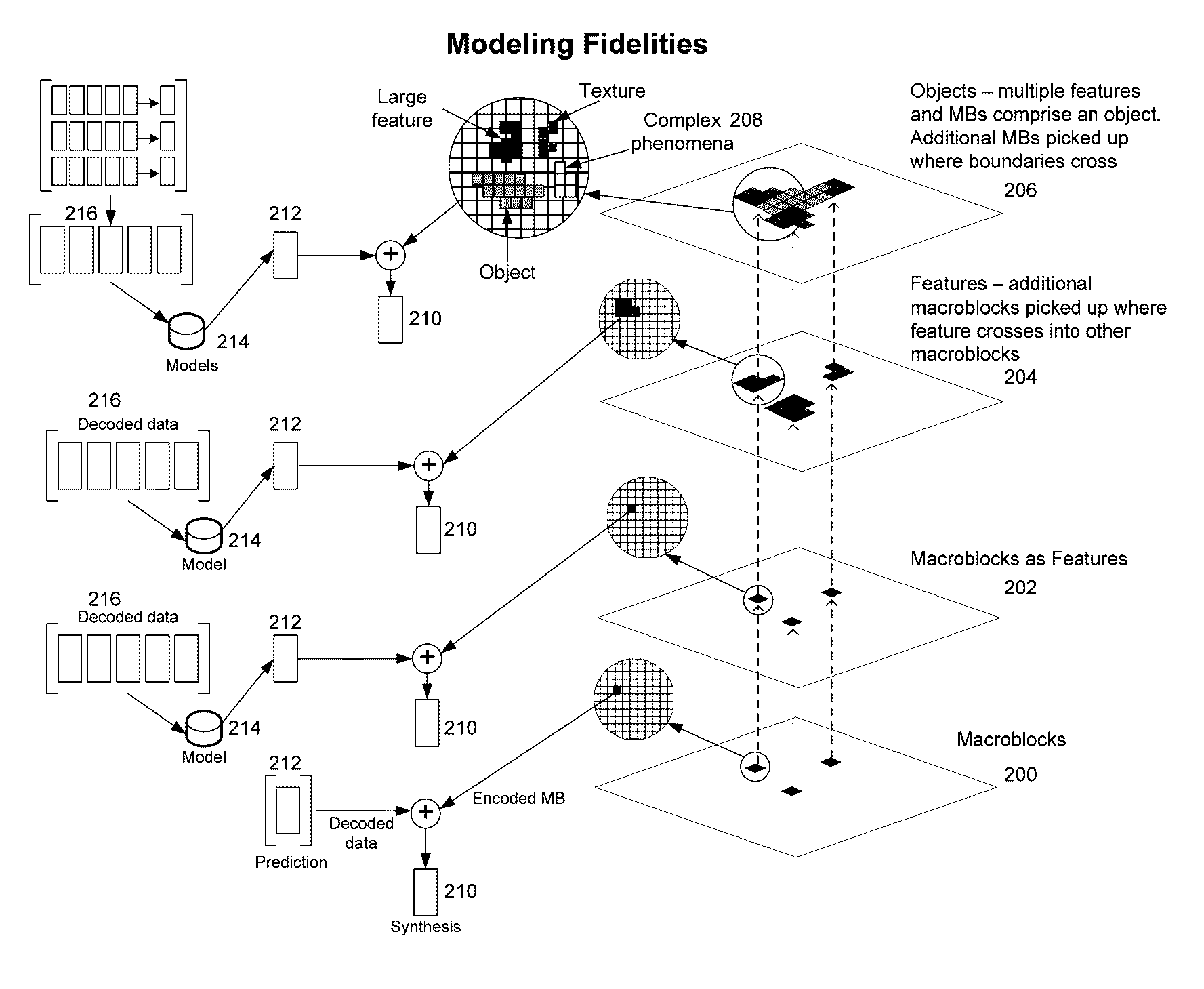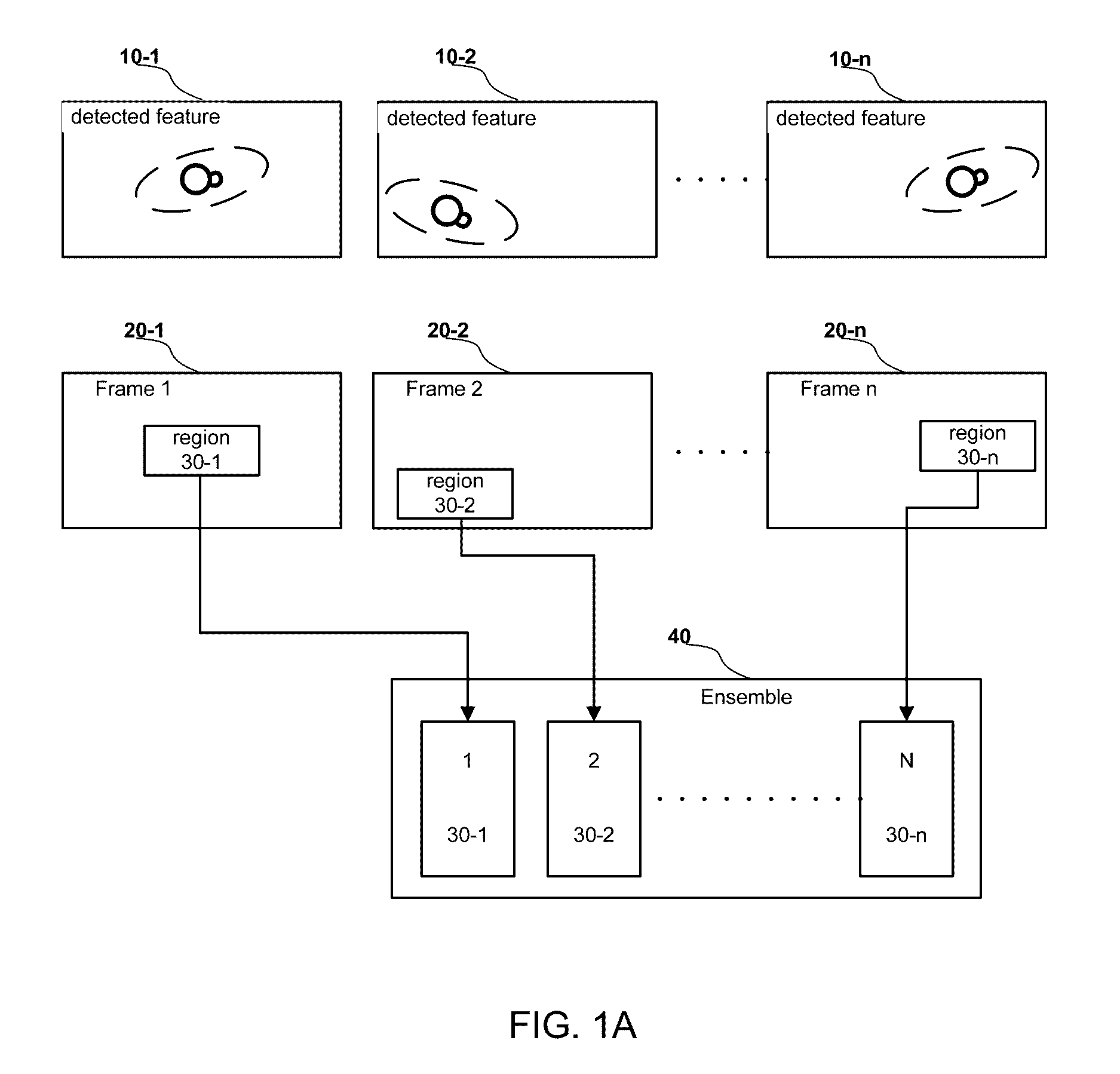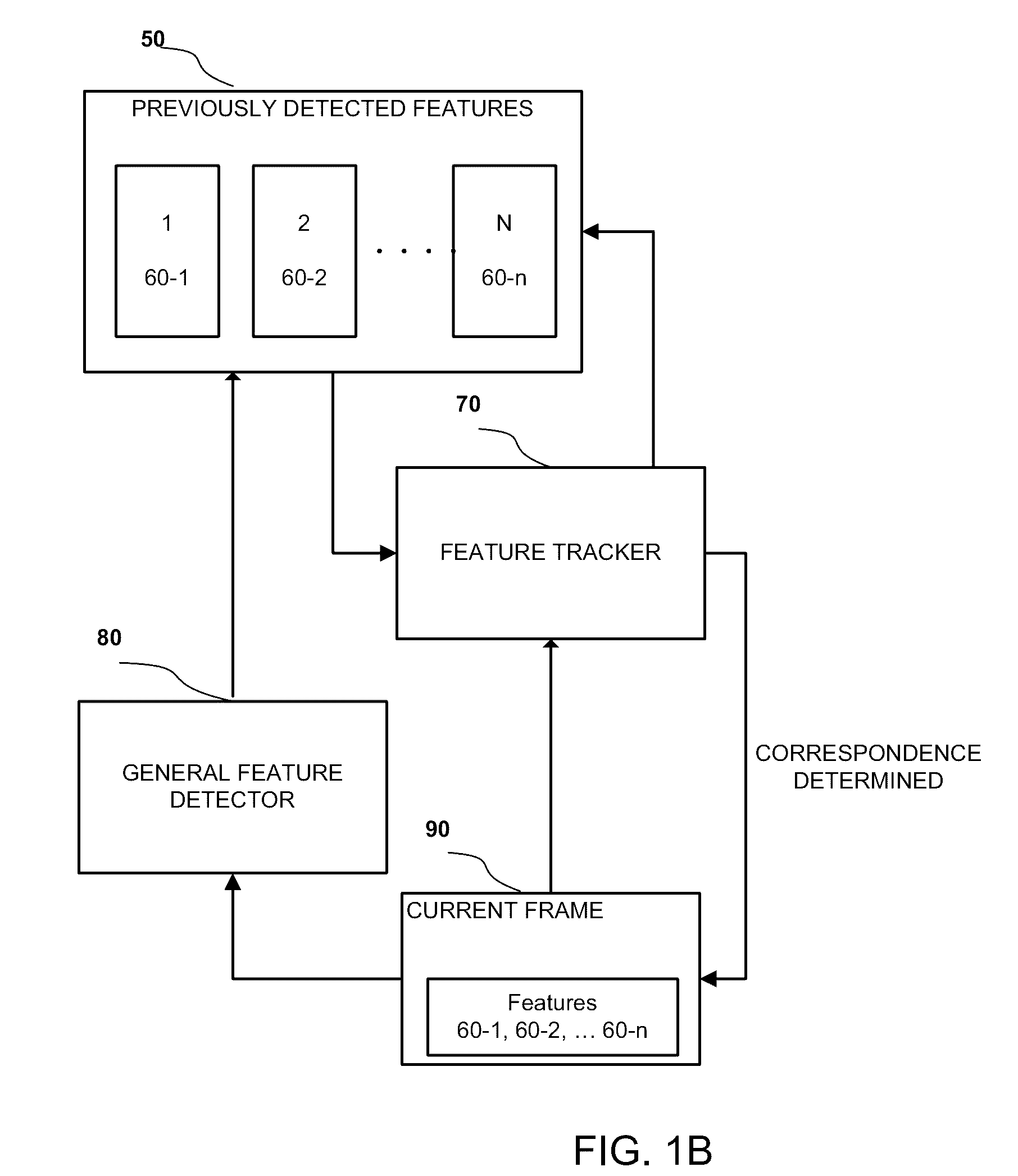Model-based video encoding and decoding
a model-based video and video encoding technology, applied in the field of model-based video encoding and decoding, can solve the problems of limited bbmec search process, high cost of i-frame encoding, and inability to search exhaustively, etc., and achieve the effect of efficient encoding
- Summary
- Abstract
- Description
- Claims
- Application Information
AI Technical Summary
Benefits of technology
Problems solved by technology
Method used
Image
Examples
Embodiment Construction
[0044]The teachings of all patents, published applications and references cited herein are incorporated by reference in their entirety. A description of example embodiments of the invention follows.
[0045]The invention can be applied to various standard encodings and coding units. In the following, unless otherwise noted, the terms “conventional” and “standard” (sometimes used together with “compression,”“codecs,”“encodings,” or “encoders”) will refer to H.264, and “macroblocks” will be referred to without loss of generality as the basic H.264 coding unit.
Feature-Based Modeling
Definition of Features
[0046]Example elements of the invention may include video compression and decompression processes that can optimally represent digital video data when stored or transmitted. The processes may include or interface with a video compression / encoding algorithm(s) to exploit redundancies and irrelevancies in the video data, whether spatial, temporal, or spectral. This exploitation may be done t...
PUM
 Login to View More
Login to View More Abstract
Description
Claims
Application Information
 Login to View More
Login to View More - R&D
- Intellectual Property
- Life Sciences
- Materials
- Tech Scout
- Unparalleled Data Quality
- Higher Quality Content
- 60% Fewer Hallucinations
Browse by: Latest US Patents, China's latest patents, Technical Efficacy Thesaurus, Application Domain, Technology Topic, Popular Technical Reports.
© 2025 PatSnap. All rights reserved.Legal|Privacy policy|Modern Slavery Act Transparency Statement|Sitemap|About US| Contact US: help@patsnap.com



